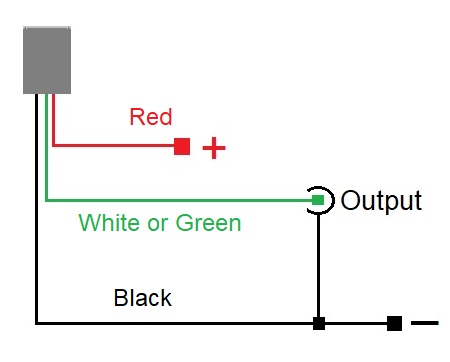|
|
|
|
|
|
Build a VLF Radio Receiver
Excellent for experimenters who are interested in the lowest radio frequency range of 1 Hz to 20 KHz. Detects natural radio waves.
Use this basic VLF receiver to detect electrostatic waves in the frequency range of 1 Hz to 20 KHz.
Listen to: Tweeks, Whistlers, Hum, Noise, Lightning, Dawn Chourus, etc.
Listen to: Electronic devices noises and hums.
Listen to: Insects in flight, their wings can generate a buzzing hum.
Detects lightning flashes 1000's of miles away.
This receiver is best used away from powerlines, as it can detect the 60 Hz hum.
Just connect a battery and connect the green (output) wire to the microphone input of any portable (battery powered!) audio amplifier or audio recorder unit.
Features:
It is overload protected and reverse current protected, so you can't burn it out while experimenting if powered at up to 15 volts.( Suggested operating voltage is between 1 volt to 12 volts. Receiver auto-adjusts to supply).
To reduce hum and interference, use a battery to power the receiver only.
Part # VLF-101 is $ 29.95 + $ 15.00 s/h. Ships via flat-rate Priority US Mail.
Save this page, as below are the instructions. There are no printed paper instructions included with the unit.

Connect a 1.5 to 9 volt battery to the black and red terminals. The black is (-) and the red is (+).
Connect the output wire to the input of a battery powered audio recorder. The white (or green) is the sensor output. Connect it to the center pin of the mic input. The black wire is ground. Connect it to the shield wire of the mic input.
The unit can be mounted on a pole or used hand-held.
This unit is VERY sensitive to electric fields, and should be use far away from power lines, else constant power line hum will greatly interfere with reception. You may want to find a public park or camping park, where you can use the unit overnight, because the night time is best for reception of the sferic waves. Some emissions are only heard at night, such as the "Tweeks". Whistlers can be heard anytime, but are best at night. Dawn Chourus is heard only during predawn to sunrise times.
WARNING!: Do not place the unit near your audio amplifier's speaker or else LOUD feedback sound can occur.
WARNING!: Do not use headphones or eaphones to listen with the unit, loud feedback squeel sounds possible if feedback occurs.